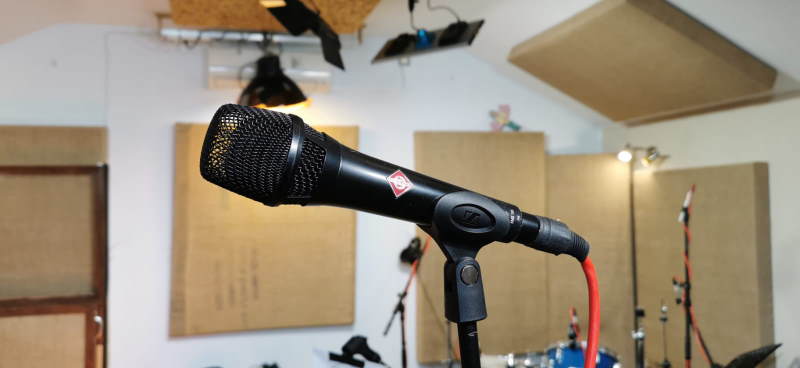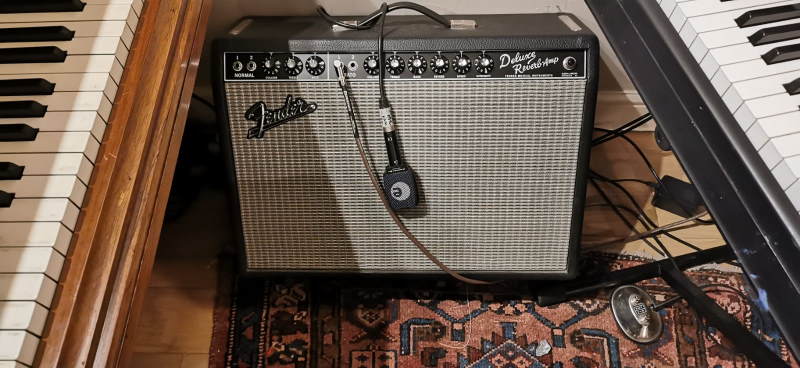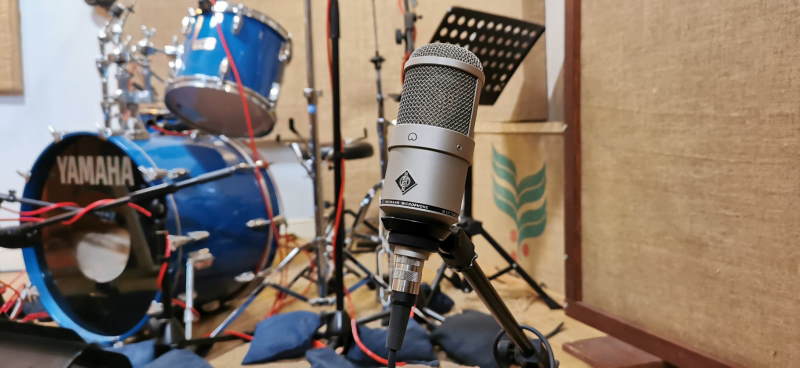Ola Onabulé’s livestream performances feed the soul with Sennheiser
British-Nigerian singer/songwriter uses Sennheiser and Neumann microphones to deliver top-quality live gigs from his home studio

Left to right: Nick Meier (Guitar); Ola Onabulé (Vocals); Duncan Eagles (Saxophone); Chris Nickolls (Drums); Jakub Cywinski (Double Bass)
When the pandemic started, Onabulé’s first reaction was consternation. “I’d evolved a culture of doing gigs internationally over many years. Most of my shows involved getting on a plane and going to a foreign country where I’d stay for a few days before moving on to the next destination. The pandemic created complete and absolute chaos for this way of working and panic set in,” he shares.
The initial period of uncertainty was followed by the realization that this wasn’t just a brief hiatus and Onabulé realised just how much he missed the buzz of performing.
“A good friend in Mexico said I should do live streaming,” reminisces Onabulé. “I remember asking him, ‘what’s live streaming?’. It didn’t even seep into my consciousness as a viable option at the time as I wasn’t sure how good it would be with my less than perfect internet connection and rudimentary sense of what could be achieved.”
After seeing examples of live streams, which production-wise sounded very modest, Onabulé knew he wanted to do things very differently and he threw himself into researching what equipment he would need to start his own live stream.

As he was doing that, Ola’s US manager Vernon Hammond reached out to him to say that The Blue Note, one of the most legendary and renowned jazz clubs in the world, had been in touch about Ola doing a live stream. “Vernon said, ‘The Blue Note got a live stream series, and they’d like you to be on it. Can you do it next week?’” remembers Onabulé.
With only days to transform his home recording studio into a new space for live streaming, Onabulé worked relentlessly, figuring out what camera and lighting he was going to use, as well as who would be running and switching the cameras on the day and monitoring the stream.
“My children helped me a lot behind the scenes with that first gig, coordinating the cameras and keeping an eye on the stream itself,” says Onabulé. “The situation reminded me of a professional broadcast where someone was doing a countdown just before going live. I was hooked. I was addicted. For the first time in about three months, I got that adrenaline rush of performing again and singing songs and interacting with musicians.”
Subsequently, Onabulé refined his set-up and honed his new craft and his attitude to live streaming, which he approached from a recording mindset. He spent considerable time moving sound panels around to isolate each sound, placing gobos, positioning the guitar amp in a booth away from the guitarist and leaving the lid on the piano. He also built what he called a ‘bass cave’; a series of panels that make up a cave with a mic for the double bass inside of it. “In the end, it didn’t feel like a live gig. It was like a recording session, but one where nobody’s allowed to do more than one take. It felt too restrictive, stiff and stultifying,” comments Onabulé.

As things progressed, Onabulé realized that live streams were essentially gigs that could be captured. “And that was the essence of what we were trying to do – capture the magic of five guys in a room really having fun. That’s the raison d’être, the thing we’re obsessed with doing. Then we find ways of capturing it,” he explains.
This fresh understanding required a new approach. Onabulé removed all his panels and screens, positioned the guitar amp next to the guitarist, as well as broke down his ‘bass cave’ and took the lid off the piano. He then spent more time trying to finesse the sound in each element.
For his audio set-up, Onabulé chose his tried and tested Sennheiser and Neumann microphones. For drums, he uses two Sennheiser e 902 on the kick and e 904 on the toms and snare. A Sennheiser e 906 is used on the guitar, as well as an MD 441, with the option of an MD 421 on the guitar amp when more than one amp is used. An e 908 B cardioid condenser gooseneck is used to capture the double bass, which, according to Onabulé is “absolutely gorgeous” at picking up very specific frequencies and capturing the intonation and subtlety of expression very acutely. “It’s great for frequencies in the lower mid to upper mid section where all the richness is,” he adds.

A Neumann M 147 Tube condenser microphone is used as a general mic to capture the body of an instrument, which Onabulé also uses on the double bass. For piano, a matched pair of Neumann TLM 170 large-diaphragm condenser microphones are used, which he has also found perfect for traditional classical recording.
Onabulé’s tried and tested vocal mic is a Neumann KMS 105, which he has been using for the last 12 years. “I just love it. It’s almost an extension of my voice now and it’s perfect for this setting actually. If I’d used a studio mic condenser, because of where I stand in the room, there’d be too much of everything else going into the microphone. The KMS 105 gives me that condenser vibe, but is more targeted,” he says.
One of the most interesting things for Onabulé has been seeing live feedback from the audience and interacting with them in real-time.
“I realise how much of an adrenaline junkie I am, how much I need to interact,” he shares. “In a normal live gig situation, you wouldn’t be able to get immediate feedback of what a person is thinking, in a live stream, people comment on very specific things in the live chat. It’s almost like an acute focus group exercise. People say ‘listen to the way he sang that note’, or ‘look at the way the guitarist is playing that solo’, and they are saying it as they’re seeing it.”
Themed live sessions and inviting talented guests, such as saxophone player Duncan Eagles and phenomenal Swiss guitarist Nicholas Meyer mean that fans are always in for a new experience. For his next live stream on the 23rd of January, Onabulé will be presenting Songs For A New Year with Chris Nickolls (Drums), Kuba Cywiński (Double Bass), Nicolas Meier (Guitar), and John Turville (Piano).
Onabulé’s reach is global, with fans logging in from the UK, Mexico, Argentina, Japan, China, Australia, Nigeria and many other places, and their reaction has been extremely positive. “Whilst the live stream medium has its shortcomings, such as the streaming delay and inability to stream in 4K high definition due to bandwidth restrictions, I still think this is going to be an essential part of the ever-changing music scene and the business of sound recording, as well as how music is digested and delivered. Doing these live gigs has been good for us, the players, and it has been good for the audience in almost exactly the same way. It’s like we’re feeding one another’s’ souls.”
Onabulé believes that livestream technology directly supports people’s desire for the visceral experience of others performing, singing, dancing, and expressing their almost primeval behaviours via the technology in their lives. This makes Onabulé really excited about seeing how the technology is going to evolve and where the art travels with technological advancements in livestreaming.
“I think this is the future, but the importance of having good-quality sound is not going to change,” concludes Onabulé. “I remember talking to someone at the beginning of this experience and they said, ‘look, you can just put your phone up, sing into it and people will enjoy it’. I said, ‘I agree with you. But what I’m interested in is how much more will they enjoy it if I can give them the type of sound quality they would expect at a gig?’. If the pianist plays a beautiful touching solo, I feel there’s some respect in delivering all the frequencies this incredibly complex instrument is designed to emit because all the emotion in his playing is hidden in those frequencies, released as oscillating and exciting airwaves into the room!
“If I can capture that and give a fully immersive experience to the audience, why not? I’m very fortunate to be able to do that with all the amazing Sennheiser and Neumann mics I’ve collected over the years. They allow me to push the envelope and continue developing myself in this exciting new venture.”
 How to resolve AdBlock issue?
How to resolve AdBlock issue?